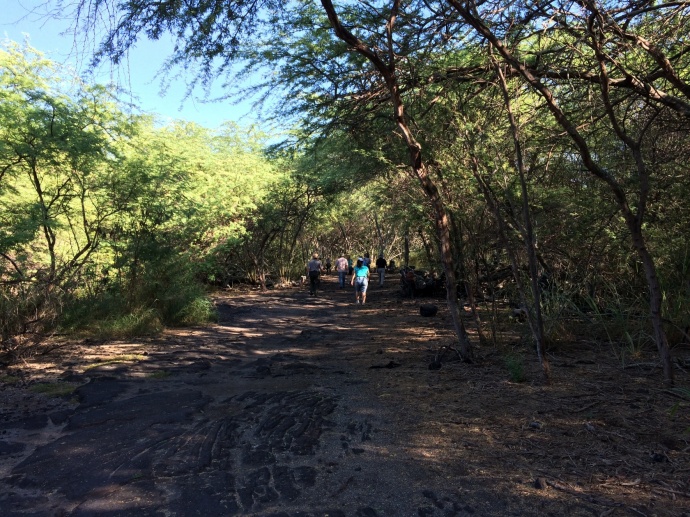LETTER: Kaloko-Honokōhau National Park’s Invasive Species Problem
Opinion pieces, analyses and letters are intended to provide a diverse range of views from our community. They are not intended to represent the views of Maui Now.
By Peter Young
This week we call attention to the negative impacts caused by invasive species on Hawaiʻi’s natural and cultural resources through the 3rd Annual Hawaiʻi Invasive Species Awareness Week.
The program is part of the Hawaiʻi Invasive Species Council where I was the co-chair when I served as the Director of Department of Land and Natural Resources.
Kaloko-Honokōhau National Historical Park’s premise for its petition for a State groundwater management area designation is that withdrawal from wells in the mauka high level aquifer will impact the makai anchialine ponds, fishponds and native Hawaiian practices.
While focusing on that premise the National Park has ignored its invasive species problem for years.
The Kaloko-Honokōhau National Park’s own 1974 Spirit Report and plan note the need to “eradicate the exotic vegetation … which now dominate the area.”
Numerous vegetation analysis reports were conducted in the National Park in 1990, 1996 and, most recently, in 2011. In 1990, the vegetation assessment found that 39‐species ‐ or 53% of all species in the National Park were alien … many of them invasive.
An updated inventory conducted in 1996 reported that the alien species in the National Park increased from 39‐plant species to 80‐plant species.
More alarming, the ratio of alien‐to‐total species increased from 53% to 69%.
As noted – Kaloko-Honokōhau National Park was (and is) dominated by alien plants. And, these plants are having negative impacts on the National Park’s resources including their anchialine ponds and fish ponds.
A December 31, 2014 National Park Service record reports, “Alien vegetation is causing extensive damage to archaeological sites, including toppling walls, uprooting foundations, obscuring petroglyphs and disturbing midden deposits.”
“In addition to damaging archaeological sites, invasive vegetation is extremely dense, obscuring visibility and preventing access to sites making it impossible to locate, map and document sites.”
Nearly 100-acres of the 600-acres of the National Park are covered with kiawe.
In 2014, the Economic Research Organization at the University of Hawaiʻi noted kiawe is not good for groundwater … quantity or quality.
The UHERO report noted, “the groundwater uptake of an invasive species detracts from the aquifer stock. The model’s application to the Kona Coast (Hawai‘i) showed that kiawe management can generate a large net present value for groundwater users.”
In layman’s terms, that means when you remove the kiawe, there will be more fresh groundwater.
Kaloko-Honokōhau National Park claims reduction in groundwater is a negative impact on its resources, yet nearly 20% of the National Park’s land area is covered with kiawe and there are no signs that the National Park is seeking the immediate removal of this negative influence.
Perhaps it’s time for Kaloko-Honokōhau National Park to follow their own 1974 Spirit Report and 1994 Management Plan actions, and remove the invasive species and restore the native vegetation in the National Park. This will have a profound positive effect on the National Park’s groundwater.
In Kona, a question of growing concern is: Why won’t Kaloko-Honokōhau National Historical Park do its part to enhance the groundwater by removing the invasive species?
Peter T. Young, President
Hoʻokuleana LLC
Kailua, Hawaiʻi











